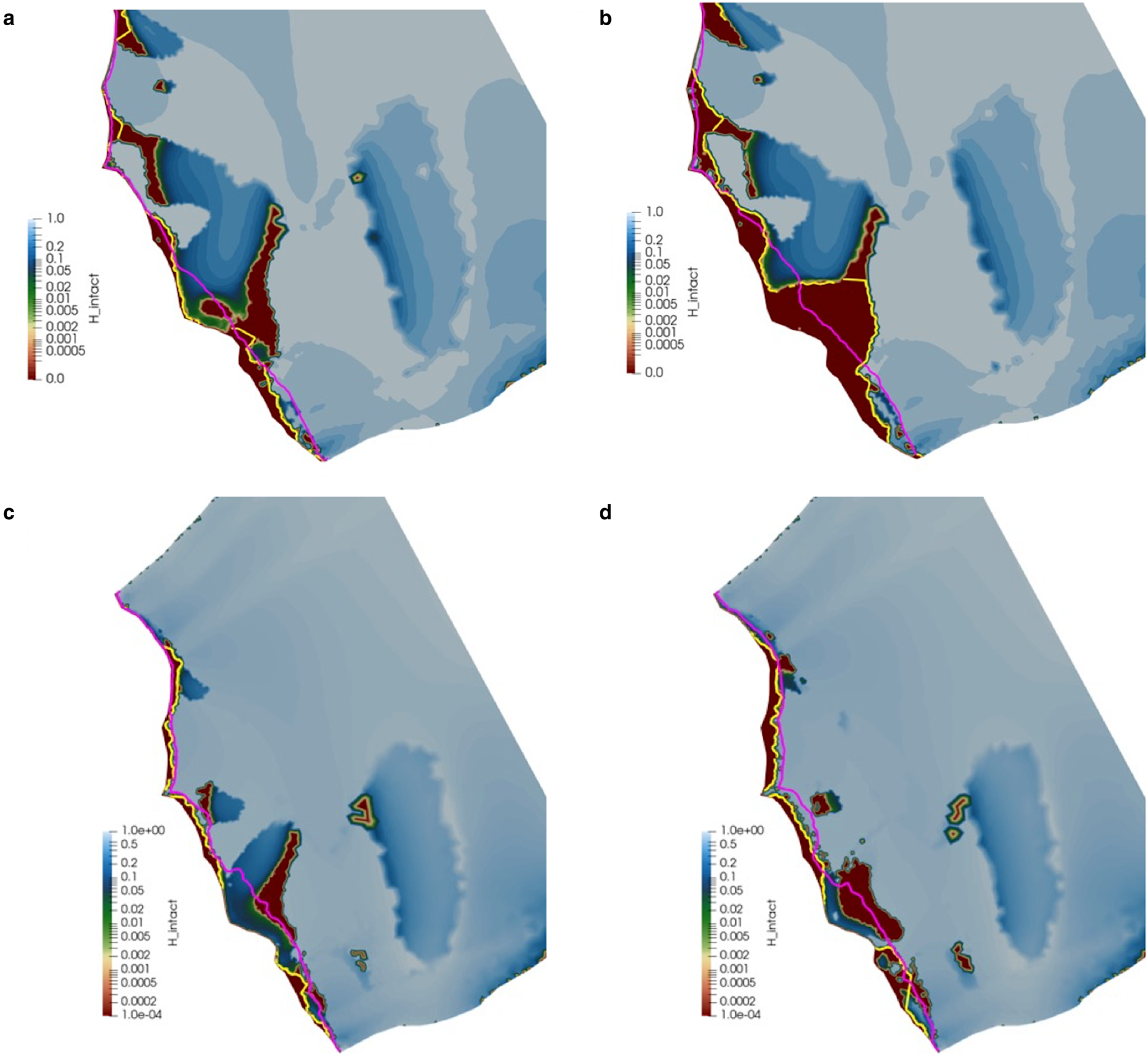Controls on calving at a Greenland tidewater glacier
Choosing the location Sermeq Kujalleq (Store Glacier), the calving behaviour of a typical Greenlandic tidewater glacier was  investigated using the crevasse-depth (CD) calving law in Elmer/Ice and compared to results with the discrete element model HiDEM as well as observational data. This particular glacier has a stable front position due to a compressive arch between lateral pinning points, which regularly lets ice that advances seawards across this arch calve back, whereas any undercut land inwards is countered by a readvance to the stable front position, which acts as an attractor between unstable super-critical and sub-critical regimes. It turns out that such a self-organising critical system can be very well described with a CD calving law in combination with a position (rather than a rate-based) calving algorithm in a continuum ice-flow model (Elmer/Ice) that resolves the major stress components at the ice front.
investigated using the crevasse-depth (CD) calving law in Elmer/Ice and compared to results with the discrete element model HiDEM as well as observational data. This particular glacier has a stable front position due to a compressive arch between lateral pinning points, which regularly lets ice that advances seawards across this arch calve back, whereas any undercut land inwards is countered by a readvance to the stable front position, which acts as an attractor between unstable super-critical and sub-critical regimes. It turns out that such a self-organising critical system can be very well described with a CD calving law in combination with a position (rather than a rate-based) calving algorithm in a continuum ice-flow model (Elmer/Ice) that resolves the major stress components at the ice front.
Read more:
Benn, D.I., J. Todd, A. Luckman, S. Bevan, T.R. Chudley, J. Åström, T. Zwinger, S. Cook, P. Christoffersen, 2023. Controls on calving at a large Greenland tidewater glacier: stress regime, self-organised criticality and the crevasse-depth calving law. Journal of Glaciology 1-17. doi:10.5194/10.1017/jog.2023.81
- Created on .
- Last updated on .
- Hits: 721


